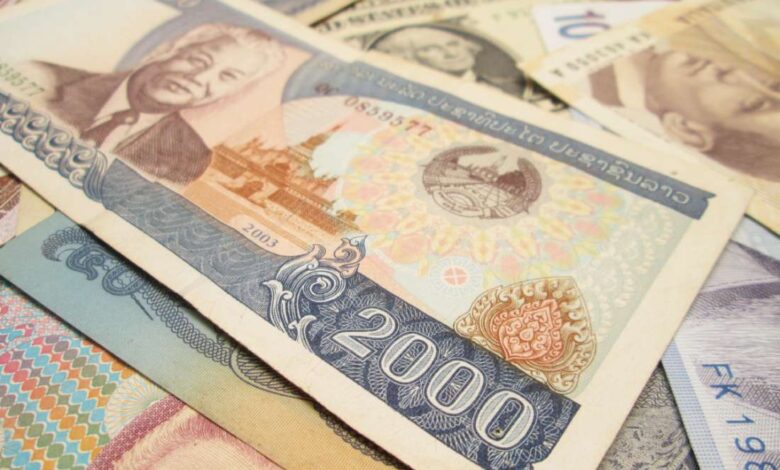Understanding Currency Pairs: A Guide to Forex Trading in the UK

Are you considering entering the exciting world of Forex trading in the UK? With so many currency pairs, it can be daunting for those new to foreign exchange markets. To help ease your worries, we have compiled this comprehensive guide to introduce you to currency pairs and explain how they work.
This guide will cover everything from an overview of what currency pairs are and their basic principles to advanced topics such as economic factors that can affect currencies and chart reading strategies. Whether you’re just starting with Forex or an experienced trader looking for tips on taking advantage of market movements, this article will surely provide valuable insights into succeeding in the Forex market.
What Are Currency Pairs and How Do They Work in Forex Trading
Currency pairs are at the heart of Forex trading. To execute a trade, traders must buy and sell pairs of international currencies. Each currency represents its originating country’s economic health, political stability, and growth potential. The most commonly traded currencies are the US dollar, euro, British pound, Japanese yen, and Swiss franc. Currency pairs are split into two categories: significant pairs and minor pairs.
Significant pairs include the US dollar and another primary currency. In contrast, minor pairs have less liquid markets and are usually made up of a primary currency and a currency from an emerging market. Ultimately, the fluctuations in currency exchange rates present opportunities for traders to profit from Forex trading. It is why understanding currency pairs and their nuances is essential for success in Forex trading.
Advantages of Trading Currency Pairs in the UK
The UK is one of the world’s major financial and trading centres, giving British traders access to some of the largest and most liquid currency markets. It means that traders in the UK can take advantage of high liquidity and tight spreads while also profiting from a range of global economic opportunities.
Additionally, due to its geographical location and proximity to Europe, the UK can access unique currency pairs, such as GBP/EUR, unavailable elsewhere. Furthermore, the UK boasts a robust regulatory framework which provides a secure environment for retail traders, with legislation designed to protect them from fraudulent practices. All these factors make Forex trading in the UK an attractive proposition for those seeking profits in global markets.
Understanding the Different Types of Currency Pairs Traded in the UK
In the UK, traders can access a broad selection of currency pairs. It includes major and minor pairs and exotic currencies such as the Scandinavian krone (NOK) and South African rand (ZAR). Knowing which type of pair to trade can be confusing when starting Forex.
Major pairs are generally safer and less volatile than their minor counterparts, making them ideal for beginner traders needing more experience or capital to risk on more sophisticated trades. Minor pairs offer higher returns but have more significant risks due to a lack of liquidity and wider spreads. Experienced traders should only trade exotic currencies with a strong understanding of underlying economic factors affecting these markets.
Deciding on a Risk Management Strategy for Trading Forex In The UK
Risk management is essential to any trading strategy, especially when trading Forex. Setting a stop-loss and take-profit order before you enter the market will help to protect your profits and manage your risk. Additionally, diversifying your portfolio across several currency pairs can reduce risk exposure while allowing you to profit from multiple markets.
Finally, it’s important to remember that the Forex market can be unpredictable, so having an exit plan is essential for minimising losses if the market moves against you. By understanding how currency pairs work and exercising sensible risk management techniques, UK traders can maximise their chances of success in the Forex market.
Making Use of Technical Analysis to Predict Price Movements in Currency Pairs
Forex traders widely use technical analysis to anticipate changes in currency exchange rates. By studying past price movements and looking for patterns that can be used to predict future movements, technical analysts attempt to gain an edge over the market. Popular techniques such as charting, trend lines and indicators are all valuable tools for analysing currency pairs.
While technical analysis can help traders identify potential buying or selling opportunities in the Forex market, it should only be used as part of a well-rounded trading strategy – sound fundamental research and risk management principles should also form part of any successful approach to trading forex in the UK.
Practical Tips for Beginners Venturing into Forex Trading in The UK
For those just starting in the Forex trading world, there are a few key points to remember. Firstly, choosing a broker regulated by the Financial Services Authority (FSA) and having an established reputation for providing reliable services is crucial. Start with a small amount of capital and use leverage responsibly, as significant leverage can increase losses and gains. Finally, ensure that you fully understand the risks before starting and never risk more than you can afford to lose.






